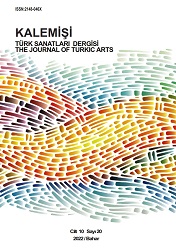TOMBAK, SAVAT VE MİNE KUYUMCULUK: TAKI TASARIMI SÜSLEME TEKNİKLERİNİN KİMYA İLE İLİŞKİSİ
THE RELATIONSHIP OF TOMBAK, SAVAT AND MINE JEWELERY-JEWELRY DESIGN DECORATION TECHNIQUES AND CHEMISTRY
Author(s): Hilmi GÜNEYSubject(s): Cultural history, Sociology of Culture, Sociology of Art, History of Art
Published by: Sanat ve Dil Araştırmaları Enstitüsü
Keywords: Jewellery; Jewelery design; Decoration techniques; Chemistry;
Summary/Abstract: Jewelery and jewelery design processing techniques are in principle based on three basic applications: drilling-cutting, forging and engraving. The production of jewelry design, which started with these processing principles throughout the ages, has strengthened the relationship between art and craft with different decoration techniques. These decoration techniques have been enriched over time by combining with different metals and materials as well as many physical applications. However, in the process until today, from melting precious metal ores used in jewelry-jewelry design at different settings to alloys obtained by mixing different metals with each other; Many chemical studies were also needed, from welding or chemical cleaning of the processed metal to separation/purification of alloys. Studies that started as alchemy with the discovery of metal oxides in ancient times gave birth to the science of chemistry in our recent history. Thanks to this science, materials used for jewelery-jewelry design decoration techniques, especially tombac/gilding, savat/niello and enamel/enamel techniques, were obtained with chemical mixtures. Today, these materials, which are obtained by different methods, continue to be used for the same decoration purposes. With this study, from the birth of jewelry-jewelry design, within the ancient period decoration works; The discovery, production and development process of the materials used in tombak, niello and enamel decoration techniques and their current applications are mentioned; The contribution of chemical studies to these decoration techniques in the historical process is mentioned.
Journal: Kalemişi - Türk Sanatları Dergisi
- Issue Year: 10/2022
- Issue No: 20
- Page Range: 66-78
- Page Count: 13
- Language: Turkish

